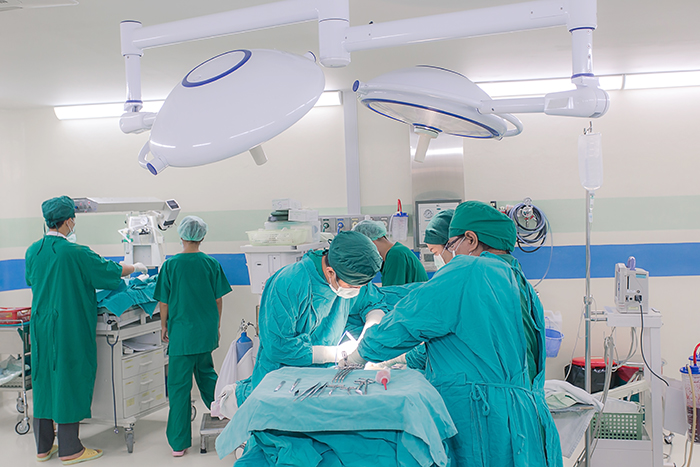
Caesarean Section or C-Section delivery is considered as a safe and easy alternative to complicated normal delivery. There are various circumstances where C-Section deliveries are considered by obstetricians. After having multiple Caesarean deliveries, Caesarean Section becomes necessary.
However, there are situations which arise before the delivery, where it may become difficult and risky. Such situations cause maternal and foetal complications. Advance planning becomes important to avoid any mishap. A good team including an obstetrician, an anesthetist, a neonatologist, OT technicians and nurses is essential
What is Caesarean Section delivery?
The Caesarean Section or C-Section is a surgery which an obstetrician carries out by opening up the mother’s abdomen and uterus.
Why are Caesarean Section performed?
This decision depends upon various health issues that a mother and baby are facing. Some of the common
reasons are:
• If the first two deliveries have been by C-Section, then subsequent ones must be by C-Section only.
• If mothers are infected with HIV or Herpes, there are chances that they get transferred to the baby via natural birth.
• Under some co-morbidities like big babies of diabetic mothers and high blood pressure, C-Section is preferred.
• Opting to C-Section in case of any complications while performing normal delivery.
• Wrong position of the baby, large size of the baby, birth defects and irregular
heartbeats in the baby.
• Placenta may be blocking the cervix.
• Placenta may separate from the uterus.
Complicated Caesarean Section deliveries
The reasons for performing C-Section may be complex and varied but as a procedure it is safe and simple which ensures healthy delivery.
But, there are instances and medical conditions where Caesarean Section deliveries become complex and challenging. These complex Caesarean deliveries are carried out by skilled and experienced obstetricians with utmost planning and full-fledged operating environment with back-up of critical care. Enough emphasis is given on safety and well-being of both the mother and the baby.
What are the various complications in Caesarean delivery?
Placenta Accreta: It is a high-risk pregnancy complication. In normal circumstances placenta detaches from the uterine wall after childbirth. But in Placenta Accreta, part or all of the placenta remains attached to the site of previous scar in the uterus. This can cause severe blood loss after delivery. It is one of the complications of placenta previa and is handled by removal of the uterus (hysterectomy).
Adhesions of Urinary Bladder and Gut: The adhesions are bands of fibrous scar tissue that form on organs in the abdomen. They can cause organs to stick to one another or to the wall of the abdomen. In multiple C-Section the development of post-Caesarean adhesions are commonly found. This leads to many complications like bladder injury, bowel obstruction, and increased blood loss. It should be handled by an experienced obstetrician during surgery.
Ruptured Uterus: It is rare but it happens if women try normal traditional delivery after two Caesarean Section. This can cause severe bleeding in the mother and can suffocate the baby. In such cases next normal delivery is totally avoided and C-Section is opted under high risk conditions with utmost planning.
What things one should keep in mind after Caesarean Section delivery?
It takes four to six weeks to recover from C-Section, in case the C-Section is complex the time to recover will go up. But with proper care and follow-up a mother can get back to normal condition with ease. One can do gentle exercises like walking but more intense exercises should be avoided till you are completely recovered and don’t feel any pain. Have a balanced diet; a dietitian will give you a diet chart.
Make scheduled visits to your doctor. Medical attention is needed if you have pain when you pass urine, if your pain is getting worse, if your tummy area feels sore or tender, you have an upset stomach, if your wound is red, swollen or painful, if you have a high temperature, if bleeding is still heavy after a week or gets heavier.
Dr Tahira Kazmi is Senior Consultant (visiting) at Badr Al Samaa Hospital, Ruwi and works as full-time senior consultant at Khoula Hospital, Ministry of Health. She has over 30 years of experience and is an expert in the management and treatment of high risk pregnancies with complications of recurrent miscarriages, diabetes, hypertension and obstetric history. She successfully deals with ectopic pregnancies, early pregnancy loss, previous intra-uterine foetal death, and pre-term labour.